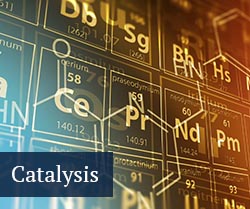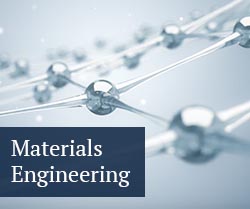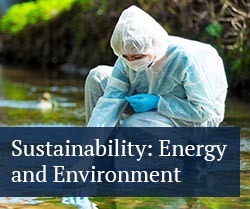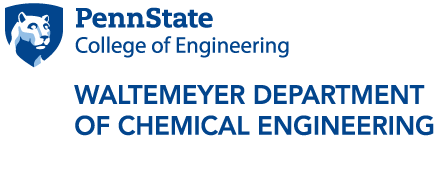
Catalysis Cluster
Catalysis encompasses a broad range of technologies and science that facilitates discovery, development, and use of low-energy reaction pathways to change molecules.
Researchers in Catalysis Science & Engineering use a wide range of materials characterization tools, and Penn State’s Materials Research Institute provides access to one of the most well-equipped materials characterization facilities in the world.
Catalysis plays pivotal roles in many modern technologies, including:
- energy conversion and storage
- reduction of greenhouse gas emissions
- pollution reduction
- plastics recycling
- production of industrial and pharmaceutical products
- biotechnology
- water treatment and purification
Related fields:
- chemical engineering
- chemistry
- materials science
- energy conversion and storage
- environmental protection and greenhouse gas reduction
- nanoscience
- elecrochemistry
- reaction engineering
Catalysis students learn:
- materials synthesis and characterization
- reaction kinetics
- theory and modeling
- thermodynamics
- spectroscopy
- reactor design and management
- reaction networks
- data management
Catalysis careers include:
- industrial engineers
- chemists
- entrepreneurs
- corporate leaders
- patent lawyers
- plant/production managers
- researchers at national labs
- scientists in federal agencies
Related Penn State units:
- Catalysis Science & Engineering
- Chemical Engineering
- Chemistry
- Energy and Minerals Engineering
- Materials Science and Engineering
- Agricultural and Biological Engineering
- Civil and Environmental Engineering
- Materials Research Institute
- Institute of Energy and the Environment
Chemical engineering faculty:
To see the full list of Penn State faculty involved in catalysis research, visit the Catalysis Science & Engineering list of researchers.

Kostas Alexopoulos
Heterogeneous Catalysis and Reaction Engineering, Multiscale Modeling

Bert Chandler
Heterogeneous Catalysis, Energy Transport and Storage, Nanomaterials

Ezra Clark
Heterogeneous Electrocatalysis and Sustainable Chemical Synthesis

Michael Janik
Atomistic Modeling of Catalysis for Energy and Environment

Gina Noh
Heterogeneous Catalysis and Kinetics

Robert Rioux
Chemical Catalysts and Nanoscale Systems

Phillip Savage
Kinetics, Catalysis, and Reaction Engineering for Sustainability

Raymond Schaak
Synthetic Inorganic Nanochemistry

Ezgi Toraman
Alternative Energy Resources, Biomass and Plastic Waste Pyrolysis
Catalysis Contact:
- Bert Chandler
Professor of Chemical Engineering
Professor of Chemistry
bert.chandler@psu.edu - Catalysis Science & Engineering
Research Clusters:







